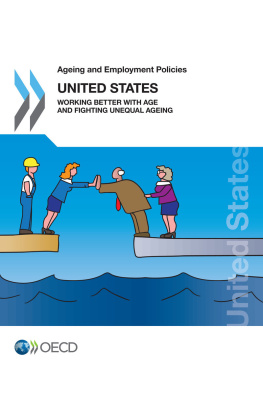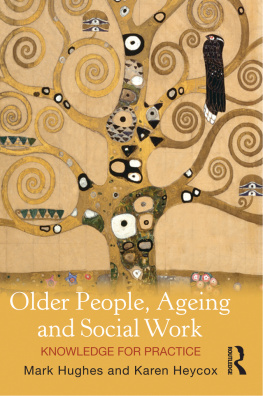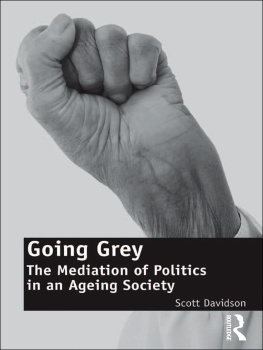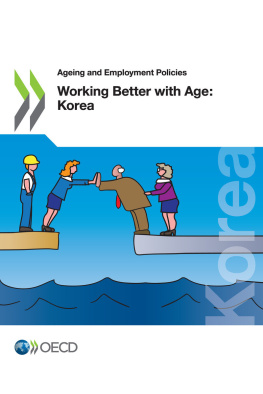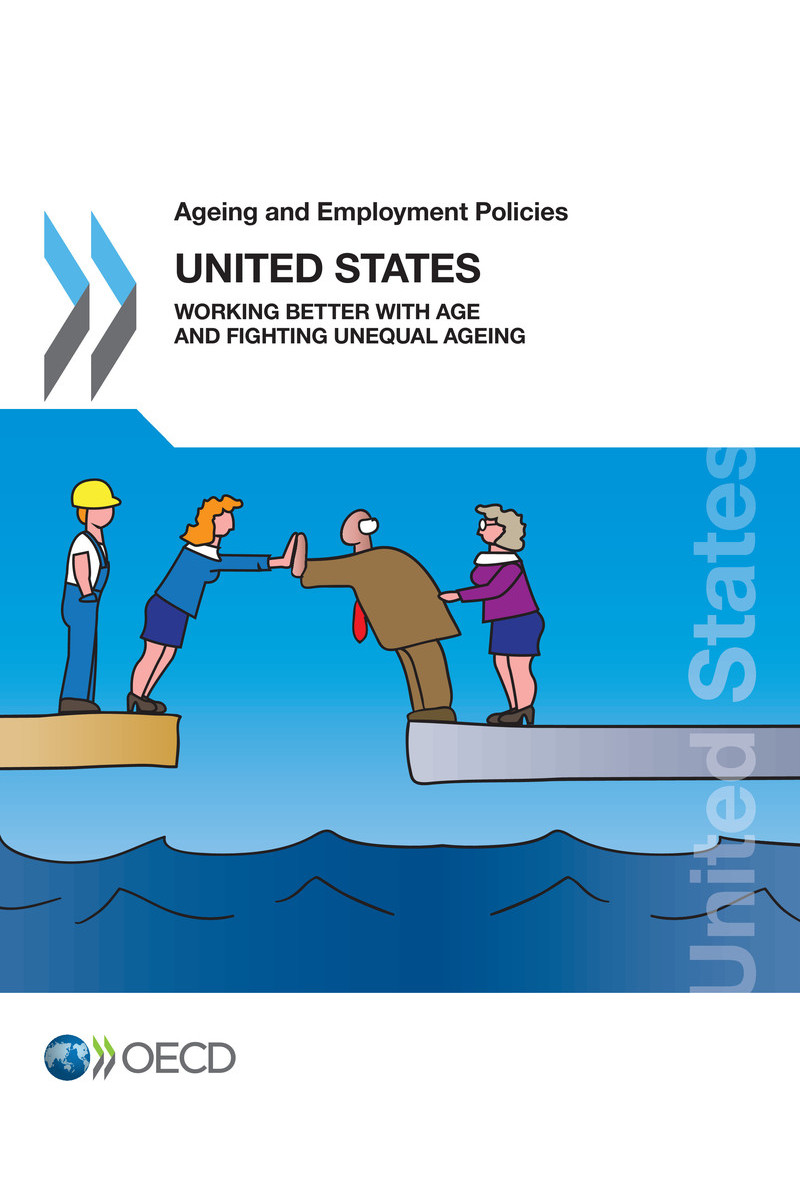Ageing and Employment Policies: United States 2018 Working Better with Age and Fighting Unequal Ageing
Please cite this publication as:
OECD (2018), Ageing and Employment Policies: United States 2018: Working Better with Age and Fighting Unequal Ageing , OECD Publishing, Paris.
http://dx.doi.org/10.1787/9789264190115-en
Metadata, Legal and Rights
ISBN: 978-92-64-19009-2 (print) - 978-92-64-19011-5 (pdf) - 978-92-64-29835-4 (HTML) - 978-92-64-28904-8 (epub)
DOI: http://dx.doi.org/10.1787/9789264190115-en
Series: Ageing and Employment Policies
ISSN: 1990-102X (print) - 1990-1011 (online)
This work is published under the responsibility of the Secretary-General of the OECD. The opinions expressed and arguments employed herein do not necessarily reflect the official views of OECD member countries.
This document, as well as any data and any map included herein, are without prejudice to the status of or sovereignty over any territory, to the delimitation of international frontiers and boundaries and to the name of any territory, city or area.
The statistical data for Israel are supplied by and under the responsibility of the relevant Israeli authorities. The use of such data by the OECD is without prejudice to the status of the Golan Heights, East Jerusalem and Israeli settlements in the West Bank under the terms of international law.
Photo credits: Cover @ iStockphoto.com/MirekP.
Corrigenda to OECD publications may be found on line at: www.oecd.org/publishing/corrigenda .
OECD 2018
You can copy, download or print OECD content for your own use, and you can include excerpts from OECD publications, databases and multimedia products in your own documents, presentations, blogs, websites and teaching materials, provided that suitable acknowledgement of OECD as source and copyright owner is given. All requests for public or commercial use and translation rights should be submitted to .
Foreword
Given the rapid population ageing, providing older people with better work incentives and choices is tremendously important to promote economic growth and to help sustain public social expenditures. Therefore, in 2011 the OECD Employment, Labour and Social Affairs Committee decided to carry out a new series of policy reviews entitled Working Better with Age to encourage greater labour market participation at an older age, through the fostering of employability, job mobility and labour demand. It builds upon previous work that the OECD has conducted in this area in the Ageing and Employment Policies series, summarised in the Organisations major cross-country report Live Longer, Work Longer , published in 2006.
In parallel to population ageing, inequality is also on the rise in many countries, growing from one generation to the next and old-age inequality will almost certainly increase among future retirees with higher risks of poverty among them. The OECD has stepped up its research efforts to identify ways of preventing this unequal ageing, recognising that a lower level of inequality is both an end in itself and a way of increasing countries resilience to the consequences of demographic change. As a part of the OECDs inclusive growth agenda, the report Preventing Ageing Unequally published in October 2017 documents how disadvantages in education, employment and health lead to deeply entrenched inequalities. Effective and well-tailored policy action is needed to achieve greater inclusiveness in later life while making sure that pension spending does not become an unsustainable financial burden for society.
This report points to areas where changes or new reforms are needed in the United States to improve work incentives and employment opportunities at an older age as well as to promote more equal outcomes across older workers.
The report benefited greatly from discussions with experts, officials, employer federations, academics and businesses during an OECD mission to the United States in early 2017, including a kick-off seminar, and from comments to various drafts provided by several authorities and stakeholders.
This report is published under the responsibility of the Secretary-General of the OECD.
Acknowledgements
This report was prepared by two divisions of the Directorate of Employment, Labour and Social Affairs (ELS): the Skills and Employability (SAE) Division (Daniel Alonso Soto, Dana Blumin, Luke Haywood, Duncan MacDonald, Monica Meza-Essid, Veerle Miranda, Anne Saint-Martin and Anne Sonnet (Team leader)) and the Social Policy Division (SPD) (Herv Boulhol (Team leader), Manuel Flores, Nathalie Lagorce, Marius Lske and Andrew Reilly). Editorial assistance was provided by Marlne Mohier and Lucy Hulett (ELS) as well as from Kate Lancaster (Public Affairs and Communications Directorate).
The report was prepared under the general supervision of Gabriela Ramos, OECD Chief of Staff and Sherpa to the G20. We are very grateful to Stefano Scarpetta (ELS Director), Mark Pearson (ELS Deputy Director), Monika Queisser (SPD Head) and Mark Keese (SAE Head) for their useful comments on various versions of the report.
We thankfully acknowledge the many suggestions provided by colleagues from AARP and the U.S. Department of Labor.
This report is published with the financial assistance of AARP. The views expressed in this report should not be taken to reflect the official position of AARP.
Acronyms and abbreviations
AARP
American Association of Retired Persons
ADEA
Age Discrimination in Employment Act
AET
Adult education and training
ALMP
Active Labour Market Programme
ATAA
Alternative Trade Adjustment Assistance
BLS
Bureau of Labor Statistics
CIPD
Chartered Institute of Personnel and Development
CTE
Career and Technical Education
CPS
Current Population Survey
DEI
Disability Employment Initiative
EEOC
Equal Employment Opportunity Commission
ELSA
English Longitudinal Study of Ageing
ETA
Employment and Training Administration
EPL
Employment Protection Legislation
EU-OSHA
European Agency for Safety and Health at Work
GDP
Gross domestic product
HRS
Health and Retirement Study
ICT
Information and Communications Tools
INQA
Initiative New Quality of Work
ISCO
International Standard Classification of Occupations

